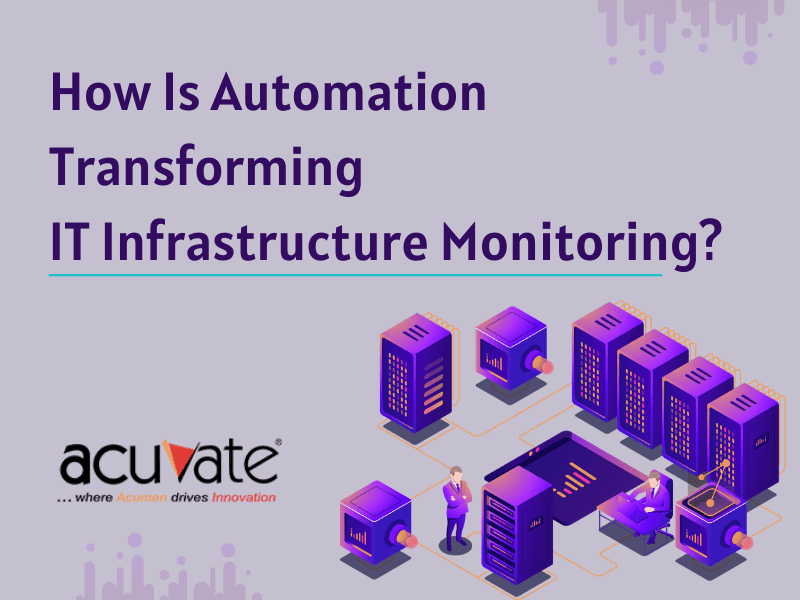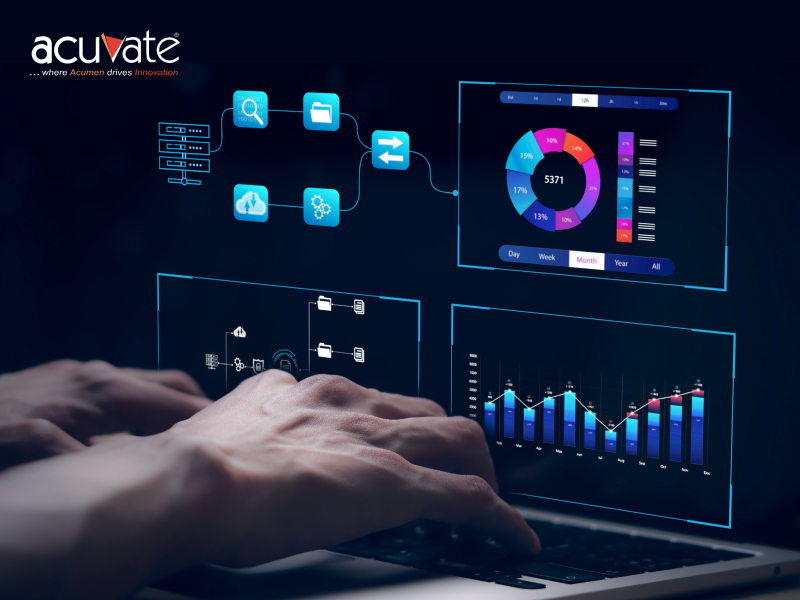Digital business success depends on the ability to handle the unprecedented pace of change. In recent times, covid and remote work has been driving the change across every enterprise. Change is the only constant in the ever-transforming business world. It provides enterprises with a unique opportunity and a chance to lead and grow. The need for swift change and an explosion of data is increasing complexity in IT operations.
The volume, velocity, and the unintended consequence of a change in IT operations are overwhelming leaders. Often IT leaders are blindsided by the impact of proposed changes and critical system outages. There is an unintended struggle to get consolidated insights from a fragmented team due to disparate monitoring tools.
Traditionally, IT infrastructure monitoring involves ensuring optimal performance. With the changing dynamics, consolidating and analyzing the data to drive business results and improve business performance is proven to be a necessity. Data analysis and infrastructure monitoring in a conventional way have their side effects. It is escalating complexity, dwindling productivity, and hampering the overall efficiency of the IT. They need more than just an IT team to process and manage the organization’s IT infrastructure. That is where Artificial intelligence for IT operations (AIOps) works wonders.
AIOps is the infusion of artificial intelligence within IT operations and an evolution of IT operational analytics(ITOA). It brings in the advantage of automating infrastructure monitoring, maximizing agent productivity, increasing visibility, enhance IT performance, and much more.
Owing to the complexity and a large amount of data accumulated in multiple fragmented systems, automation seems to be the only way forward to process large workloads within less time. Various tools and dashboards add their trouble to the ability to respond to issues. Aggregating data across applications and processing it thru impactful machine learning algorithms provide comprehensive and accurate visibility of IT infrastructure and applications.
As per 2019-2021 I&O Automation Benchmark Report: Emergency Technology Roadmap Trends-
I&O leaders are investing in automation tools and technologies in return to organizational demands for speed and efficiency.
How does AIOps work?
In simple terms, AIOps is used to automate and enhance IT operations using analytics and machine learning. It is usually employed to handle event correlation & analysis, change & configuration management, and predict risk effectively.
Interpreting the siloed data in the IT operations management and IT service management with the help of an aggregated data platform and machine learning algorithms helps predict and prevent critical system failures.

According to Gartner, AIOps works on two components: Big data and ML. These components work on three IT disciplines that help bridge the goal of continuous insights and improvements of IT Operations; Observe, Engage And Act. AIOps encompasses identifying and enabling new modalities of correlation and contextualization to automation using cognitive classification with the final mile of automating workflows, orchestration remediation and responses.
Performance Management (Observe): The first step involves the processing of real-time data from various sources including traditional IT monitoring, log events, etc., followed by detection of significant issues according to anomalies in the data.
The second step includes analysis of the detected anomalies and collects similar ones together. Repeated incidents are automated which will reduce the workload of IT operations and concentrate on more strategic work.
Experience Management (Engage): AiOps alerts the IT team about the anomalies and they will be aware of performance issues before the situation alarms into emergencies.
Delivery Automation (Act): AiOps increases automating remediation that has the potential to resolve the issues before it reaches the end-user.
As per the BMC software case study, Transamerica, an insurance company, has saved 9000 hours of its workforce time. The automation function of AiOps tools enables these employees to focus on work that needs human intervention.
Role of Automation in IT infrastructure monitoring-
1. Increase efficiency:
Most of the time, false alerts trigger a lot that actual issues are left unaddressed. Automation reduces these false alerts that will help the IT team to focus on the critical issues and not be distracted by irrelevant ones. Hence, this will increase the efficiency of the organization. Automation in IT infrastructure monitoring supports users by eliminating some of the workloads of an IT operative and enhancing their efficiency.
2. Faster deployment:
Deploying automated solutions for known, repetitive events to identify, analyze and fix the issue with a proactive approach will reduce MTTR (Mean time to resolution). It also increases the speed of monitoring and performance issues.
3. Reduce human error:
Automation can help identify patterns and problems before humans realize they are there. In this way, we can reduce the need for humans to identify and analyze the data that AI can readily process. Humans may leave few things out and focus on data that they think is important, whereas AI will take the entire volume of data and find patterns that humans would take much longer to figure out. Where there is human involvement, there will be human error. Automation will take care of the entire process and reduce human error resulting in increased reliability.
4. Saves time
AiOps technology automates simple repetitive operations. It reacts to the issues in real-time. Depending on the incident, it initiates an action or proceeds to the next step without the need for human intervention. Hence, it saves a lot of time for IT employees to focus more on long-term strategic plans.
5. Improve productivity.
AiOps technology automates simple repetitive operations. It reacts to the issues in real-time. Depending on the incident, it initiates an action or proceeds to the next step without the need for human intervention. Hence, it saves a lot of time for IT employees to focus more on long-term strategic plans.
As per reports issued by Accenture, automation could increase productivity by up to 40 percent by 2035.
6. Improve customer satisfaction.
Using automation behind the scenes will ensure a smooth customer experience. Enterprises these days are capable enough of predicting incidents and outages. It enables the business to turn away from the potential disaster. For instance, it enables every customer executive fully aware of their customer’s relevant data up until the point. Thereby, it increases customer satisfaction by not repeating the details that are already shared.
Final Thoughts:
Automation is like a steroid to IT infrastructure monitoring. As IT infrastructure becomes denser and deeper, IT infrastructure monitoring becomes more complex. By leveraging automation, businesses can actively monitor metrics that hinder performance and other parameters that manage workload across IT infrastructure. Handling huge quantities of server data and analyzing them is a vital step that needs to be done. It offers a way to deliver excellent customer outcomes more quickly at a lower cost. With the capability to manage high data complexity and volume, automation is effectively transforming IT infrastructure monitoring.
If you’d like to learn more about this topic, please feel free to get in touch with one of our digital workplace consultants for a personalized consultation.



